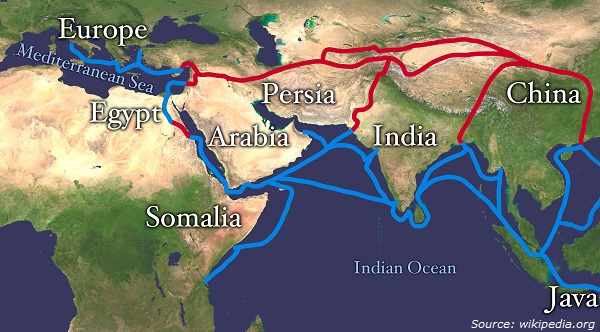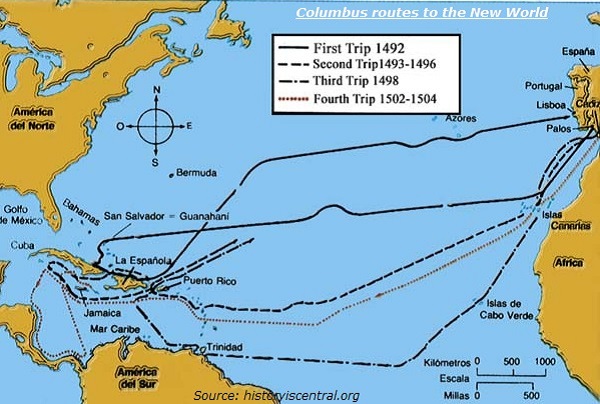
- Modern Indian History Tutorial
- Modern Indian History - Home
- Decline of Mughal Empire
- Bahadur Shah I
- Jahandar Shah
- Farrukh Siyar
- Muhammad Shah
- Nadir Shah’s Outbreak
- Ahmed Shah Abdali
- Causes of Decline of Mughal Empire
- South Indian States in 18th Century
- North Indian States in 18th Century
- Maratha Power
- Economic Conditions in 18th Century
- Social Conditions in 18th Century
- Status of Women
- Arts and Paintings
- Social Life
- The Beginnings of European Trade
- The Portuguese
- The Dutch
- The English
- East India Company (1600-1744)
- Internal Organization of Company
- Anglo-French Struggle in South India
- The British Conquest of India
- Mysore Conquest
- Lord Wellesley (1798-1805)
- Lord Hastings
- Consolidation of British Power
- Lord Dalhousie (1848-1856)
- British Administrative Policy
- British Economic Policies
- Transport and Communication
- Land Revenue Policy
- Administrative Structure
- Judicial Organization
- Social and cultural Policy
- Social and Cultural Awakening
- The Revolt of 1857
- Major Causes of 1857 Revolt
- Diffusion of 1857 Revolt
- Centers of 1857 Revolt
- Outcome of 1857 Revolt
- Criticism of 1857 Revolt
- Administrative Changes After 1858
- Provincial Administration
- Local Bodies
- Change in Army
- Public Service
- Relations with Princely States
- Administrative Policies
- Extreme Backward Social Services
- India & Her Neighbors
- Relation with Nepal
- Relation with Burma
- Relation with Afghanistan
- Relation with Tibet
- Relation with Sikkim
- Relation with Bhutan
- Economic Impact of British Rule
- Nationalist Movement (1858-1905)
- Predecessors of INC
- Indian National Congress
- INC & Reforms
- Religious & Social Reforms
- Religious Reformers
- Women’s Emancipation
- Struggle Against Caste
- Nationalist Movement (1905-1918)
- Partition of Bengal
- Indian National Congress (1905-1914)
- Muslim & Growth Communalism
- Home Rule Leagues
- Struggle for Swaraj
- Gandhi Assumes Leadership
- Jallianwalla Bagh Massacre
- Khilafat & Non-Cooperation
- Second Non-Cooperation Movement
- Civil Disobedience Movement II
- Government of India Act (1935)
- Growth of Socialist Ideas
- National Movement World War II
- Post-War Struggle
- Clement Attlee’s Declaration
- Reference & Disclaimer
The Beginnings of European Trade
India's trade relations with Europe go back to the ancient days of the Greeks. During the middle Ages, trade between Europe and India and South-East Asia was carried through various routes.
Trade Routes
Major trade routes were −
Through sea - along the Persian Gulf;
Through land- through Iraq and Turkey, and then again by sea to Venice and Genoa;
Third was via the Red Sea and then overland to Alexandria in Egypt and from there again by sea to Venice and Genoa.
The fourth one was less used i.e. overland route through the passes of the North-West frontier of India, across Central Asia, and Russia to the Baltic.

The Asian part of the trade was carried on mostly by Arab merchants and sailors, while the Mediterranean and European part was the virtual monopoly of the Italians.
Goods from Asia to Europe passed through many states and many hands. Every state levied tolls and duties while every merchant made a substantial profit.
There were many other obstacles, such as pirates and natural calamities on the way. Yet the trade remained highly profitable. This was mostly due to the pressing demand of the European people for Eastern spices.
The Europeans needed spices because they lived on salted and peppered meat during the winter months, when there was little grass to feed the cattle, and only a liberal use of spices could make this meat palatable. Consequently, European food was as highly spiced as Indian food till the 17th century.
The old trading routes between the East and the West came under Turkish control after the Ottoman conquest of Asia Minor and the capture of Constantinople in 1453.
The merchants of Venice and Genoa monopolized the trade between Europe and Asia and refused to let the new nation states of Western Europe, particularly Spain, and Portugal, have any share in the trade through these old routes.
The trade with India and Indonesia was highly prized by the West Europeans to be so easily given up.
The demand for spices was pressing and the profits to be made in their trade inviting.
The reputedly fabulous wealth of India was an additional attraction as there was an acute shortage of gold all over Europe, and gold was essential as a medium of exchange if the trade was to grow unhampered.
The West European states and merchants therefore began to search for new and safer sea routes to India and the Spice Islands of Indonesia, (at that time popular as the East Indies).
The West Europeans wanted to break the Arab and Venetian trade monopolies, to bypass Turkish hostility, and to open direct trade relations with the East.
The West European were well-equipped to do so as great advances in shipbuilding and the science of navigation had taken place during the 15th century. Moreover, the Renaissance had generated a great spirit of adventure among the people of Western Europe.

The first steps were taken by Portugal and Spain whose seamen, sponsored and controlled by their governments, began a great era of geographical discoveries.
In 1494, Columbus of Spain set out to reach India and discovered America instead of India.